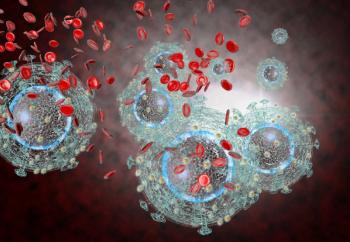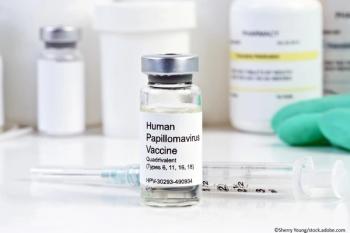
Making Sense Out of a Plethora of Hepatitis C Clinical Trials Results
It is quite likely that we have entered a new era of treatment for individuals either mono-infected with HCV or co-infected with HCV/HIV. Details here.
Like HIV, the replication cycle of hepatitis C virus (HCV) is complex, involving multiple steps and many potential opportunities for pharmacologic inhibition or blockade. Nevertheless, attempts to eradicate HCV have been disappointing and previously have involved using the combination of intravenous interferon (weekly) and oral ribavirin. This combination has been associated with substantial toxicities, does not inhibit directly any step of HCV replication, and has not proved to be particularly effective for the most common genotypes (1a and 1b) in the US-especially in the setting of concomitant HIV co-infection.
The situation began to change in 2011, after the FDA approved the first two directly acting antiviral (DAA) drugs for the treatment of HCV infection. These two, boceprevir and telaprevir, are HCV NS3/NS4A protease inhibitors. However, they have activity only against HCV genotype 1a and 1b, must be combined with interferon and ribavirin, are associated with substantial toxicity and many drug-drug interactions, and are only approved for use in HCV–mono-infected persons. Nevertheless, beginning with the Conference on Retroviruses and Opportunistic Infections (CROI) in 2012, data were presented that demonstrated impressive “sustained virologic response” (SVR) rates (ie, cure), in the range of 50% to 70% of treated individuals with or without HIV co-infection.
At CROI 2014, there were even more presentations on exciting new HCV treatments.
Currently, DAA HCV drugs (either FDA-approved or far along in clinical trials) fall into 3 categories:
o NS3/NS4A protease inhibitors (simeprevir, faldaprevir, asunaprevir, boceprevir, telaprevir)
o NS5B polymerase inhibitors (sofosbuvir)
o NS5A inhibitors (daclatasvir)
Among the key points:
o The “second-generation” HCV protease inhibitors (faldaprevir, asunaprevir, simeprevir) have activity against multiple genotypes (1, 2, 4, 5, 6), but currently are studied most frequently when combined with interferon and ribavirin. SVR rates at 12 weeks are in the 70% range in HCV treatment-naive HCV/HIV-co-infected persons treated for 12 to 24 weeks. However, the treatment “failures” all failed with protease inhibitor resistance. Faldaprevir works equally well in persons with or without cirrhosis (when combined with interferon and ribavirin) and both faldaprevir and simeprevir work equally well in those with or without the Q80K polymorphism (the presence of which has been associated with worse outcomes in other studies). Simeprevir, in particular, seems to be very well tolerated.
o The combination of asunaprevir plus daclatasvir plus BMS-791325 (a non-nucleoside NS5B polymerase inhibitor) given for 12 weeks resulted in SVR rates at 12 weeks of around 90% in HCV–mono-infected persons. Treatment failures all had evidence of resistance to 2 or more of the drugs.
o Sofosbuvir plus oral ribavirin given for 12 to 24 weeks in HCV/HIV–co-infected persons with genotypes 1, 2, or 3 resulted in SVR 12-week rates of between 67% (genotype 3) and 88% (genotype 2). Individuals infected with genotype 1 had a 12-week SVR rate of 76%. Twelve weeks of treatment seemed as good as 24 weeks of treatment.
o Daclatasvir plus simeprevir given for either 12 or 24 weeks with or without ribavirin to persons mono-infected with HCV genotype 1 resulted in about a 70% SVR rate at 12 weeks in treatment-naive persons, but a 0% SVR rate at 12 weeks in previously treated “non-responders.” The duration of therapy did not make a difference, and the addition of ribavirin only made a difference in the outcome in previously treated “non-responders.”
o Other combinations of HCV-active drugs, many in earlier phases of development, when given for as little as 6 weeks resulted in impressive SVR rates of over 90% at 12 weeks.
It is quite likely that we have entered a new era of treatment for individuals either mono-infected with HCV or co-infected with HCV/HIV. At a minimum, those individuals who need to be treated in the next several months because of more advanced fibrosis can do so with several FDA-approved regimens active against multiple genotypes and expect to have a 70% chance or better of a SVR. However, all of those regimens contain either or both ribavirin and interferon, and are associated with a high rate of adverse effects. In addition, the management of such individuals, including the prescription of these medications, is best left to health care providers with extensive experience with these drugs.
For those individuals with less advanced fibrosis due to HCV, regimens that are substantially less toxic, more efficacious, and target 3 different steps in HCV replication are likely no more than 2 years away from widespread availability. On the other hand, it likely will take substantially longer to know which regimen(s) is (are) the “best,” how best to re-treat previously treated non-responders, whether 12-week sustained virologic responders will relapse 1 to 3 years later, how to best treat the “failures” with the newer therapies, and how to best sequence the available regimens to overcome HCV resistance to the components of previous regimens. Nevertheless, the pace of progress in the past 3 years has been breathtaking.
References:
Abstracts
• Dieterich D, Tural C, Nelson M, et al. Faldaprevir plus pegylated interferon alfa-2a/ribavirin in HIV/HCV coinfection: STARTVerso4. (Abstract 23). Presented at Conference on Retroviruses and Opportunistic Infections 2014. March 4, 2014, Boston.
• Dieterich D, Rockstroh JK, Orkin C, et al. Simeprevir (TMC435) plus PegIFN/ribavirin in HCV genotype-1/HIV-1 coinfection (Study C212). (Abstract 24). Presented at Conference on Retroviruses and Opportunistic Infections 2014. March 4, 2014, Boston.
• Everson GT, Thuluvath PJ, Lawitz E, et al. All-oral combination of daclatasvir, asunaprevir, and BMS-791325 for HCV genotype 1 infection. (Abstract 25). Presented at Conference on Retroviruses and Opportunistic Infections 2014. March 4, 2014, Boston.
• Naggie S, Sulkowski M, Lalezari J, et al. Sofosbuvir plus ribavirin for HCV genotype 1-3 infection in HIV coinfected patients (PHOTON-1). (Abstract 26). Presented at Conference on Retroviruses and Opportunistic Infections 2014. March 4, 2014, Boston.
• Kohli A, Sims Z, Nelson A, et al. Combination oral, hepatitis C antiviral therapy for 6 or 12 weeks: final results of the SYNERGY tTrial. (Abstract 27LB). Presented at Conference on Retroviruses and Opportunistic Infections 2014. March 4, 2014, Boston.
• Zeuzem S, Hezode C, Bronowicki J-P P, et al. Daclatasvir in combination with simeprevir ± ribavirin for hepatitis C virus genotype 1 infection. (Abstract 28LB). Presented at Conference on Retroviruses and Opportunistic Infections 2014. March 4, 2014, Boston.
• Ferenci P, Nyberg A, Bernstein D, et al. PEARL III: SVR ≥99% after 12 wks of ABT-450/r/267 + ABT-333 ± RBV in treatment naïve HCV GT1b infection. (Abstract 29LB). Presented at Conference on Retroviruses and Opportunistic Infections 2014. March 4, 2014, Boston.
Newsletter
Enhance your clinical practice with the Patient Care newsletter, offering the latest evidence-based guidelines, diagnostic insights, and treatment strategies for primary care physicians.

































































































































































































































































































